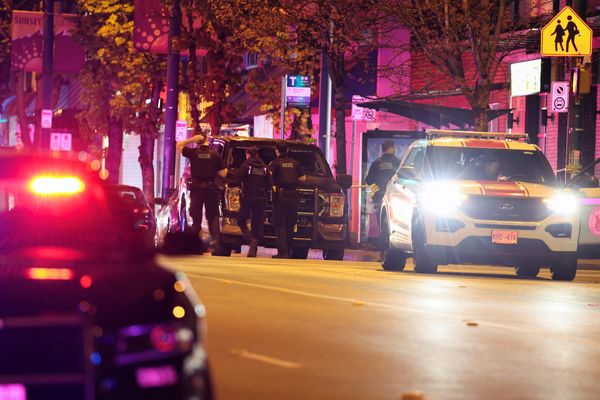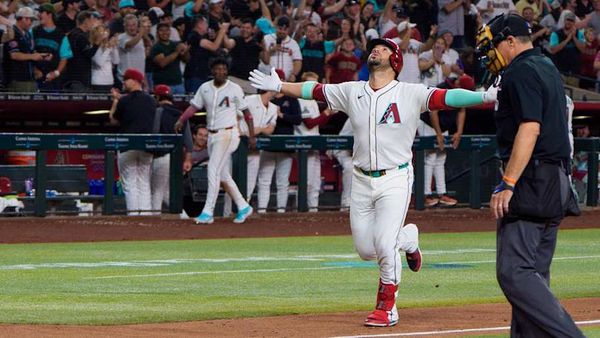When the Inspired Home Show returned to McCormick Place earlier this month after a three-year pandemic hiatus, the annual housewares show was the smallest in recent memory, and among the most significant in its 80-year history.
Navigating mask mandates, vaccine cards, the waning omicron variant and an increasingly remote business world, the Inspired Home Show made Chicago a convention city again.
The first major trade show to cancel at McCormick Place as the pandemic hit in March 2020, the Inspired Home Show was also the first to welcome visitors back to the city’s convention center two years later, drawing 20,000 visitors over three days. While attendance was down about 60% from 2019, organizers were both pleased and relieved to pull the show off, a symbolic bookend to the COVID-19 convention crash.
“This feels a lot better than being the first one to cancel,” said Leana Salamah, a spokeswoman for the Rosemont-based International Housewares Association, which puts on the annual show. “Being back and even being the first ones out of the gate to do that just feels fantastic.”
The economic engine of Chicago’s tourism industry, McCormick Place was hard-hit by the pandemic, with more than 230 event cancellations costing the city about 3.4 million attendees and nearly $3.1 billion in economic impact. McCormick Place has 176 events on the calendar this year and projects nearly $1.9 billion in economic impact for the city.
In 2019, McCormick Place held 289 events with a total attendance of 2.9 million.
This year got off to a promising start with the Chicago Auto Show, which shifted to an outdoor summer edition last year, but made it back inside McCormick Place in February for the convention center’s first large-scale public event of 2022.
But the road to recovery may take years of red ink, taxpayer-funded incentives, and some out-of-the-box thinking to restore McCormick Place to pre-COVID-19 attendance numbers and operational self-sufficiency, as larger questions loom about the traditional convention model.
“McCormick Place had been steadily losing convention and trade show business prior to the pandemic,” said Heywood Sanders, a convention expert, and professor at the University of Texas at San Antonio. “I can’t imagine that post-pandemic, we’re going to be back with any speed to where attendance was in 2019.”
The Metropolitan Pier and Exposition Authority, a municipal corporation whose board is split between gubernatorial and mayoral appointees, owns McCormick Place, the Hyatt Regency McCormick Place, the Marriott Marquis Chicago, Wintrust Arena and Navy Pier, which it leases to a not-for-profit corporation for $1 per year.
Its stated mission is to attract trade shows and conventions to Chicago, and bolster the regional economy.
The McCormick Square convention and hotel complex generated an operating income of $856,000 in fiscal year 2019, but fell to a loss of nearly $30 million in fiscal year 2020, which ended in June 2020 — three months into the pandemic — after McCormick Place temporarily shut down. Losses were projected to bottom at $89 million for fiscal year 2021 before climbing back into the black by 2025, according to MPEA’s current three-year financial plan.
Combined operating revenue dropped from $314 million in fiscal year 2019 to $24 million in 2021, according to financial statements.
The McCormick hotels made money before the pandemic. The convention center did not.
“The business model for convention centers everywhere is that they lose money,” said Larita Clark, CEO of the Metropolitan Pier and Exposition Authority. “I look at it as we bring in $1.9 billion in economic impact, but the convention center might lose $50 million or $60 million. It’s a great investment.”
MPEA also collects about $160 million a year in tax revenue from hotels, restaurants, auto rentals and taxis, which is used to finance debt service on $4.4 billion in bonds issued for capital projects such as the hotels and Wintrust Arena. During fiscal year 2021, falling tax revenues were inadequate to fund the $95.5 million in debt service, so MPEA borrowed $10 million in state sales tax revenue. Clark said improving hotel and restaurant revenues should enable MPEA to pay back the state by 2024.
In its three-year financial plan, MPEA projects combined hotel and convention center revenues recovering to pre-COVID-19 levels by 2023. Sanders said that may be an ambitious goal.
“Folks are not coming back, at least for now, at levels comparable to 2019,” Sanders said. “How long it might take for them to do that, or if indeed they will ever do, that is the big question.”
Sanders said convention attendance had been steadily declining in Chicago and across the country for a decade before the pandemic. While attendance will likely bounce back from its lows, the pandemic is “bound to accelerate” the long-term decline at trade shows and conventions, he said.
Like many other industries, Sanders said conventions are adapting to a more virtual post-pandemic world.
“The industry likes to say you can’t replace face-to-face,” Sanders said. “The larger economic reality is that as employers increasingly embrace, to varying degrees, remote work, and they recognize that the technology today has made lots of virtual activities far more viable, they aren’t going to send as many employees to attend a convention and trade show as they used to.”
To help speed the convention industry’s recovery, the state authorized $15 million in annual incentives for fiscal year 2022 through 2026 that MPEA can use to lure events to McCormick Place. Clark said MPEA has offered more than $25 million in incentive grants to date.
In recent years, all convention centers have been engaging in what Sanders called the “great incentives war,” using rebates, discounts or other added value to get trade shows to commit, and banking on the broader economic impact to make up the lost booking fees.
Sanders said the increase in incentives is another long-term trend accelerated by the pandemic.
“Orlando gives their center away for free,” Sanders said. “The competition’s going to get worse.”
McCormick Place has snared some big events this year, including the inaugural Star Trek: Mission Chicago next month, the Sweets & Snacks Expo, which is returning in May from Indianapolis, and the National Education Association, which is moving its July conference to Chicago from Dallas.
An even bigger win is the HIMSS Global Health Conference & Exhibition, which is scheduled to return to Chicago in April 2023 after an eight-year absence. The 2022 show takes place this month in Orlando, one of Chicago’s biggest convention rivals.
“It’s a major health care event that we are so excited to have back,” Clark said. “That’s a major event that will fill our hotels.”
But Chicago was also dealt a blow earlier this month when the Sweets & Snacks Expo, which went to Indianapolis in 2021 while McCormick Place was still closed due to COVID restrictions, announced it would be rotating the trade show over 10 years between Indianapolis and Las Vegas beginning in 2024.
The Chicago hotel industry has also struggled during the pandemic, with occupancy in the central business district dropping from 74% in 2019 to 26% in 2020, according to data from research firm STR. Hotel occupancy recovered to 42.6% last year, but fell sharply in January to 23.7% amid the rise of the omicron variant and new vaccine and mask mandates imposed by the city.
The central business district has 135 hotels offering 43,881 rooms, according to Choose Chicago, the city’s tourism arm.
While leisure travel is the primary driver of hotel occupancy, Michael Jacobson, president and CEO of the Illinois Hotel & Lodging Association, said the return of convention business to McCormick Place is crucial to the Chicago hotel industry, pushing guests out to smaller boutique hotels and even the suburbs as big box hotels fill up.
“We need conventions for our local hotel and tourism industry to flourish,” Jacobson said.
The original McCormick Place opened in 1960 and burned down seven years later. It was rebuilt in 1971 as the steel-and-glass Lakeside Center, now the oldest of four exhibition halls comprising 2.6 million square feet.
The Hyatt Regency was built in 1998, while the Marriott Marquis and Wintrust Arena opened in 2017.
Three of five competing proposals to build a Chicago casino seek to use part of the McCormick campus, including a $1.3 billion Rivers Chicago McCormick bid to redevelop Lakeside Center. Developers have touted the project as an opportunity to repurpose a seldom-used space and have promised to cover the tab for $500 million in deferred maintenance.
Clark said Lakeside Center has 253 events scheduled through 2035, generating an estimated economic impact of $13.8 billion, and that McCormick Place would not be interested in giving up any convention space without a replacement. A decision by the city on the winning casino proposal is expected this month.
The annual housewares show, which dates back to 1939, has deep roots in Chicago predating McCormick Place. Its return this month after three years was anything but assured amid the rise of the omicron variant.
“There was a real pressure cooker the last couple of months in terms of what was going to happen,” Salamah said. “When the reports started coming out in mid-January that omicron had peaked, we all breathed a sigh of relief.”
The city ended its mask mandate and proof of vaccination requirement for “certain public spaces” on Feb. 28 — just days before the March 5 -7 run of the Inspired Home Show. While McCormick Place is no longer bound by the mask and vaccine requirements, the convention center is choosing to leave that up to the individual shows, Clark said.
The Inspired Home Show still required its 20,000 attendees and more than 1,000 exhibitors to show a vaccination card, a negative COVID-19 test or proof of natural immunity after recovering from the virus. It also left a “loose” mask mandate in place, Salamah said, but most attendees doffed their face coverings by the second day.
“Not a lot of people felt obligated to wear masks,” she said. “It was really an encouragement versus a true kind of enforcement.”
The downsized show drew a large contingent of international attendees, though companies sent fewer individuals to participate, Salamah said. Though the crowd was smaller, attendees were more engaged, “spending more time together than ever before,” she said.
In the end, the old school, face-to-face trade show proved its value, she said.
“It was like a giant reunion,” Salamah said. “Everyone was so happy to be in out in person again. It was just tons of gratitude, but also an incredible amount of business got done.”







